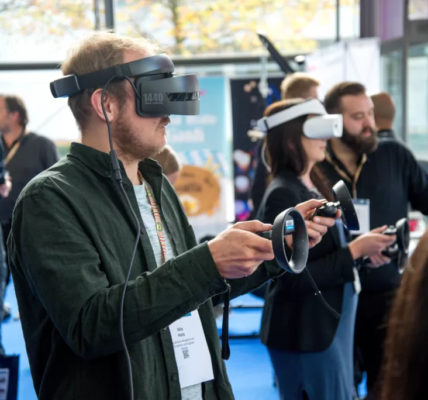In recent years, the concept of the metaverse has captured the imagination of technologists, futurists, and enthusiasts alike. Often dubbed as the future of virtual worlds, the metaverse represents a transformative vision of digital spaces where users can interact, create, and explore in immersive virtual environments. Let’s delve into the technology behind the its potential implications for the future.
Defining the Metaverse
The term “metaverse” originated from science fiction literature, particularly Neal Stephenson’s novel “Snow Crash” published in 1992. In the book, depicted as a sprawling virtual reality universe where users can engage in various activities, interact with each other, and explore virtual landscapes. Today, the concept of the metaverse encompasses a diverse range of virtual environments, platforms, and experiences that are interconnected and accessible to users worldwide.
Key Technologies Driving the Metaverse:
- Virtual Reality (VR): VR technology enables users to immerse themselves in digital environments through head-mounted displays and motion-tracking sensors. With VR, users can explore virtual worlds, interact with objects, and communicate with others in a highly immersive and interactive manner.
- Augmented Reality (AR): AR overlays digital information and imagery onto the real world, enhancing users’ perception of their physical surroundings. AR technology has applications in gaming, education, commerce, and more, blurring the boundaries between the virtual and physical realms.
- Blockchain and Decentralized Platforms: Blockchain technology facilitates the creation of decentralized virtual worlds and digital assets within. Decentralized platforms enable users to own, trade, and monetize virtual goods and assets securely, fostering a new economy.
- Artificial Intelligence (AI): AI algorithms power virtual characters, environments, and interactions within the metaverse, creating dynamic and responsive experiences for users. AI-driven systems enhance realism, interactivity, and personalization within virtual worlds, enriching users’ overall experience.

Conclusion
As technology continues to evolve, the metaverse represents a paradigm shift in how we interact with digital content, engage with communities, and experience virtual worlds. By harnessing the power of VR, AR, blockchain, and AI technologies, the metaverse offers boundless possibilities for innovation, collaboration, and exploration. While the journey towards realizing the full potential of the metaverse is still underway, its emergence heralds a new era of connectivity, creativity, and immersion in the digital age.

